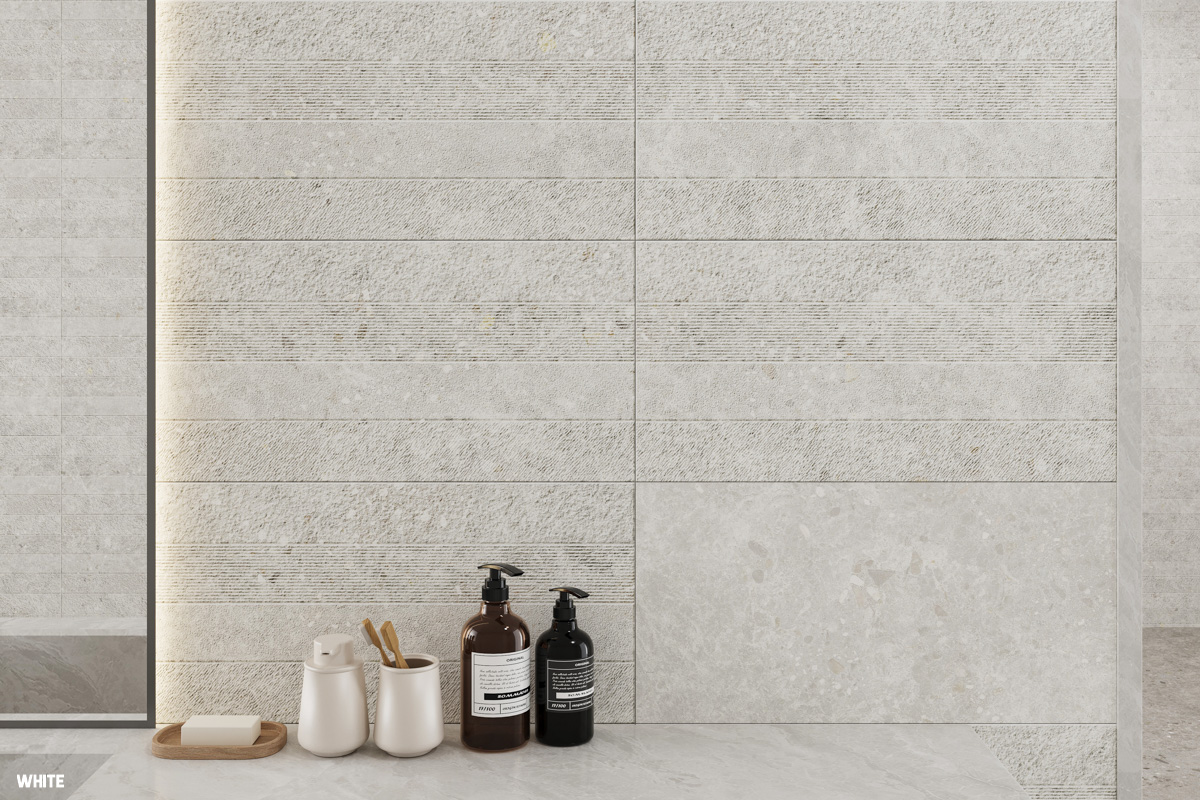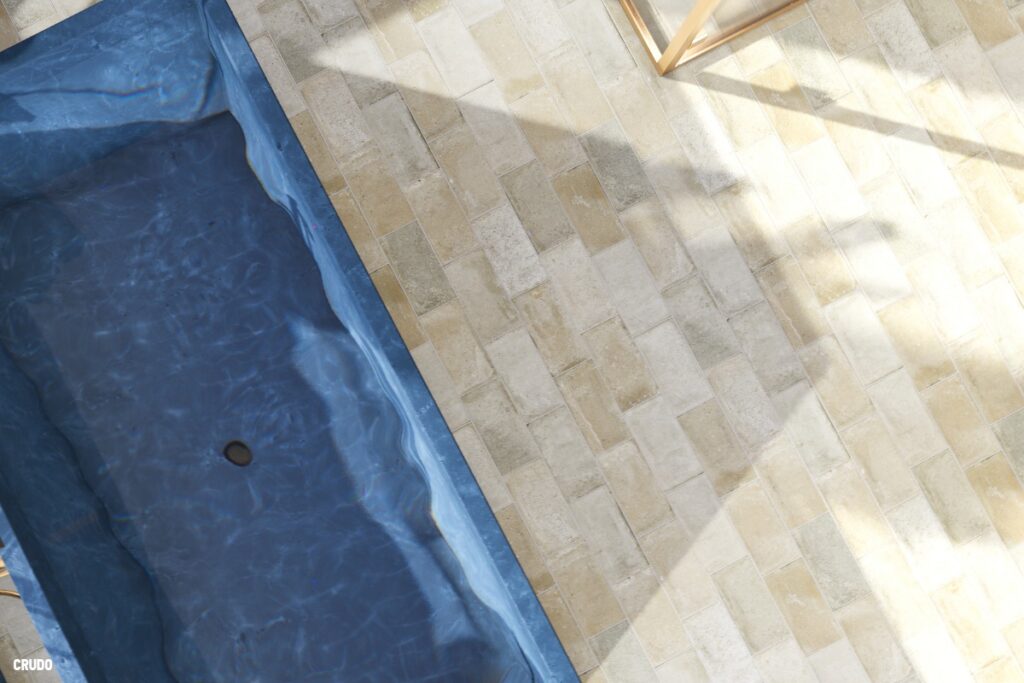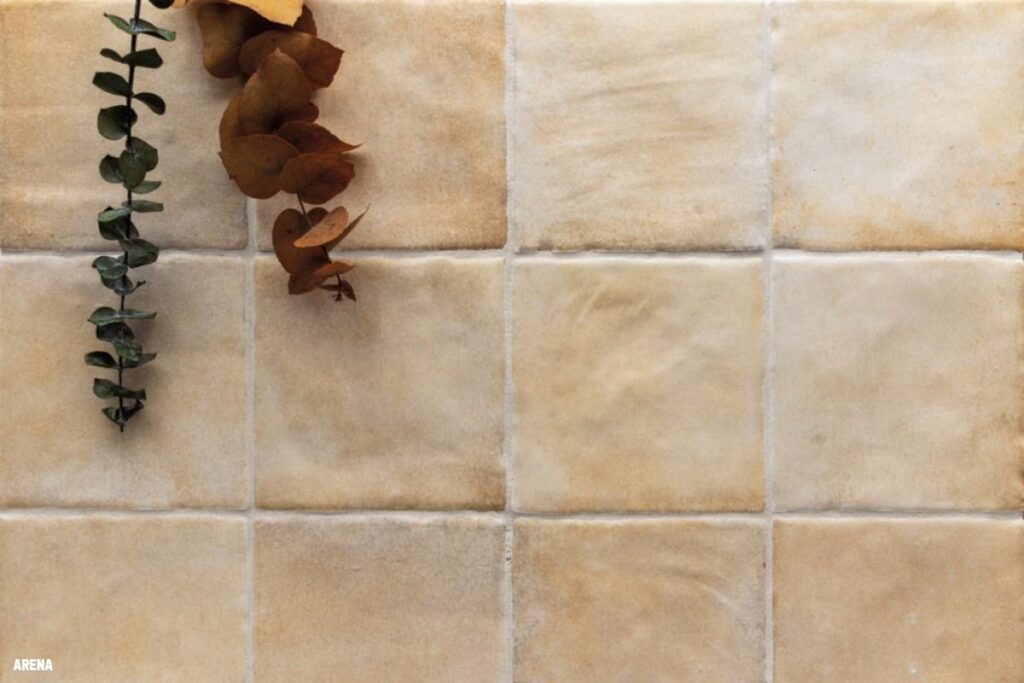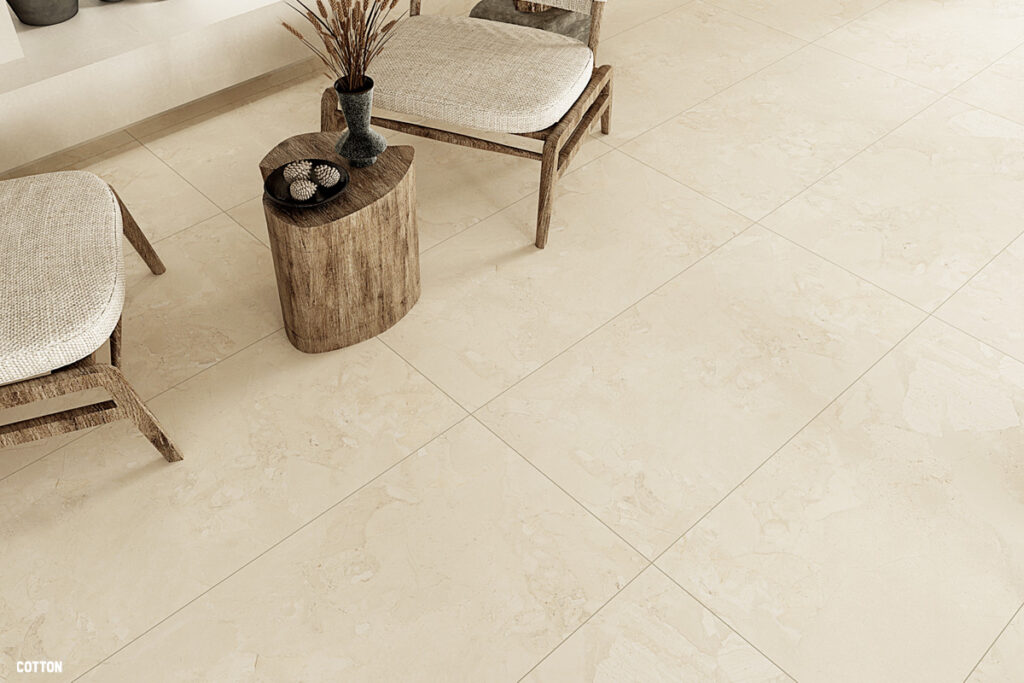
In the world of architectural design, detail defines the outcome. Proportion, finish, and jointing all influence how a space feels, and nowhere is this more evident than in tiled surfaces.
Among the many specifications designers consider, the choice between rectified tiles and non-rectified options is often underestimated.
For high-end projects, rectified edges are more than a technical feature; they are a design decision that shapes the visual rhythm of a room.
With sharp, precisely cut edges, rectified tiles allow for tighter grout joints, creating continuous planes that enhance the sophistication of a space.
Below, our ShowTile tiling experts explore why rectification matters, how it influences style, and where it delivers the most significant impact across residential and commercial projects.
What Are Rectified Tiles?
Rectified tiles are ceramic or porcelain tiles that have been mechanically finished after firing, ensuring every edge is perfectly straight and square. This process allows them to be laid with grout joints as narrow as 1.5 to 2 millimetres, far slimmer than the joints required for conventional pressed tiles.
In large format tiles, rectification is especially valuable, as reduced grout lines emphasise the scale and continuity of the material.
The result is a clean, precise finish where the surface reads as near-seamless.

The Architectural Advantages of Rectified Edges
Visual Continuity
Slim grout joints minimise visual interruption, allowing the tile surface to flow as a single plane.
This quality is compelling when specifying stone look tiles or marble look tiles, where uninterrupted veining reinforces the authenticity of the design.
Precision Detailing
Rectified edges speak to architectural discipline.
The crispness of the finish aligns with minimalist and contemporary interiors, where clean lines and subtle shadow play are essential to the aesthetic.
Scale and Proportion
In open-plan living or expansive commercial lobbies, rectified large-format porcelain tiles amplify the perception of scale.
With grout lines receding almost entirely, the flooring takes on the character of a continuous stone slab.
Ease of Maintenance
While aesthetics lead the decision, practicality supports it. Narrow grout joints collect less dirt, simplifying upkeep and ensuring surfaces retain their design clarity for longer.
Rectified vs Non-Rectified: A Design Perspective
For designers pursuing cohesion, rectified tiles provide a material language that is deliberate and controlled.
Pressed or cushioned-edge tiles, while less precise, have a softer edge that requires wider grout joints. In rustic or traditional settings, this character can be an asset, contributing to a hand-crafted or vintage look.

Rectified tiles, by contrast, are firmly aligned with modern design. Their minimal joints and sharp detailing complement sleek joinery, frameless glazing, and linear lighting systems.
One of the understated strengths of rectified edges is their interaction with light.
With minimal joints, the play of daylight or architectural lighting is uninterrupted, allowing textures, finishes, and reflective qualities to dominate.
Polished rectified tiles enhance luminosity, while honed or matt finishes diffuse light for a softer, more grounded effect.
This control over light and shadow is why rectified edges are so often specified in galleries, lobbies, and luxury residences, spaces where atmosphere is crafted as much by surface treatment as by form.
Applications in High-End Residential Spaces
Bathrooms
In bathrooms, rectified porcelain tiles create an atmosphere of refined luxury. Seamless walls in marble-look porcelain read like sculpted stone, while matt rectified floors deliver a calm, spa-like experience. Narrow grout joints also resist water ingress, ensuring longevity in wet areas.
Kitchens and Living Areas
Rectified stone look tiles used in open-plan zones expand the sense of your kitchen space. Large-format flooring extends under joinery, across thresholds, and into adjoining rooms without visual disruption. For designers working with tonal palettes, the absence of pronounced grout lines keeps the focus on materiality.

Outdoor and Alfresco Zones
Rectified outdoor porcelain pavers bring the same level of precision to terraces and alfresco areas, ensuring a seamless transition between indoor and outdoor living. When paired with rectified pool surrounds, the continuity extends into landscape design, reinforcing architectural intent.
Design Integrity in Detail with Showtile
Rectification is not only about aesthetics, but also about signalling design rigour. Just as a mitred stone benchtop or flush skirting detail demonstrates craftsmanship, rectified tiles communicate intent.
They allow the material to take centre stage without distraction, reinforcing the values of precision and refinement that underpin high-end design.
For designers, the question of rectification is not merely technical; it is integral to the spatial experience.
In high-end projects, rectified edges enable surfaces that read as continuous, intentional, and timeless.
At Showtile, we curate a range of rectified edge porcelain tiles, natural stone tiles, and stone look tiles suited to projects where continuity, precision, and architectural impact are central to the brief.
From seamless bathroom slabs to expansive commercial floors, our collection allows designers to work with confidence in both form and finish.
To explore our collection or request architectural samples, contact the Showtile team at sales@showtile.com.au or call (02) 9709 5836.
TL;DR:
Rectified tiles have precisely cut edges that allow narrow grout lines, creating seamless, sophisticated surfaces. Ideal for high-end residential and commercial projects, they enhance visual continuity, precision, scale, and light play while being easier to maintain. Non-rectified tiles suit traditional or rustic designs with wider grout joints. Showtile offers a curated range of rectified porcelain and stone-look tiles for luxury interiors, outdoor areas, and large-format applications.



